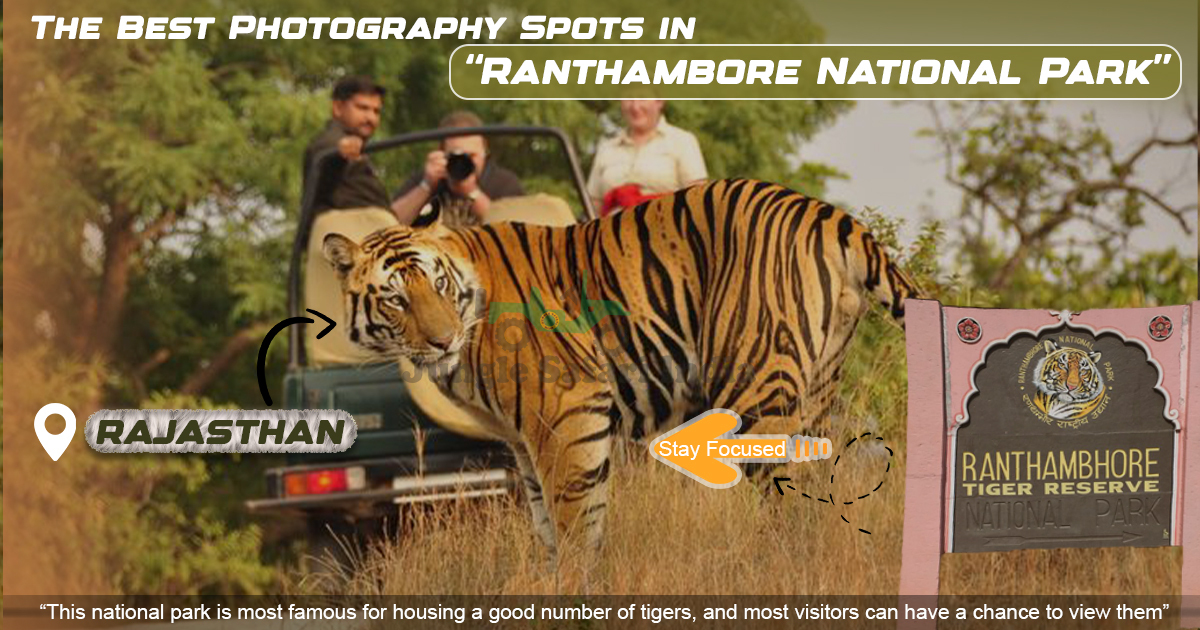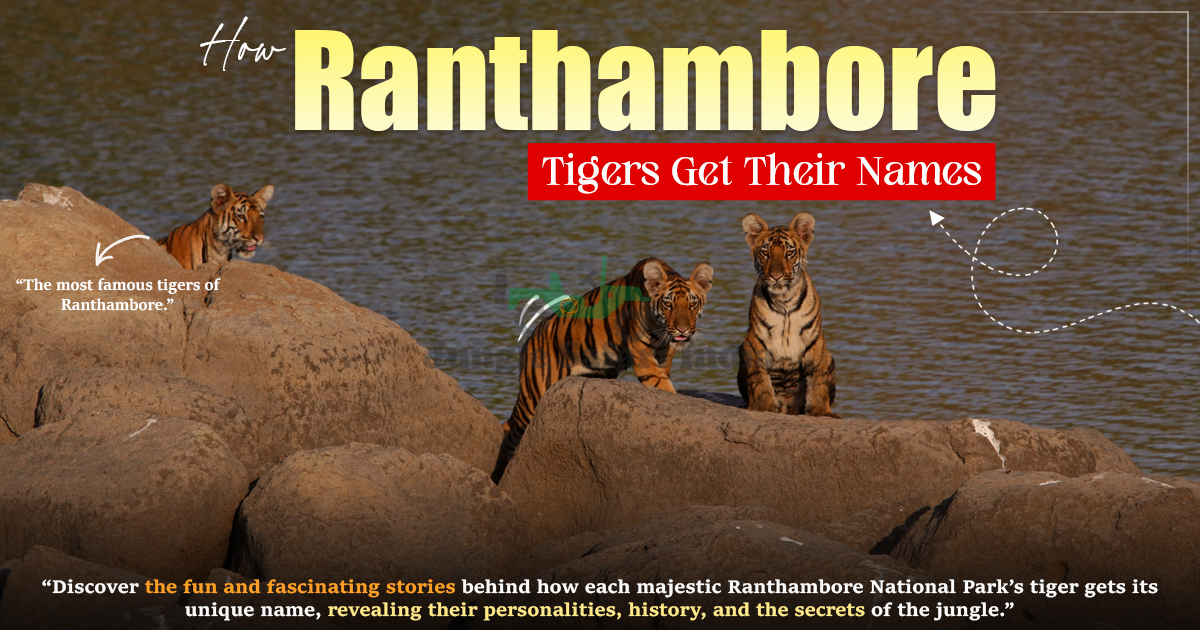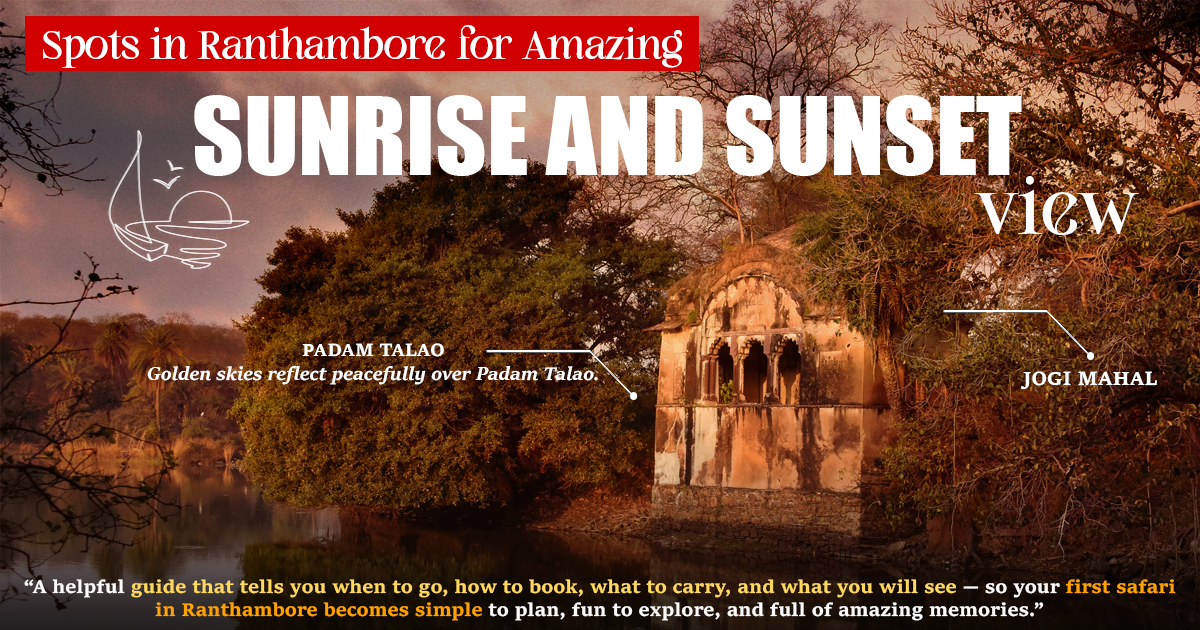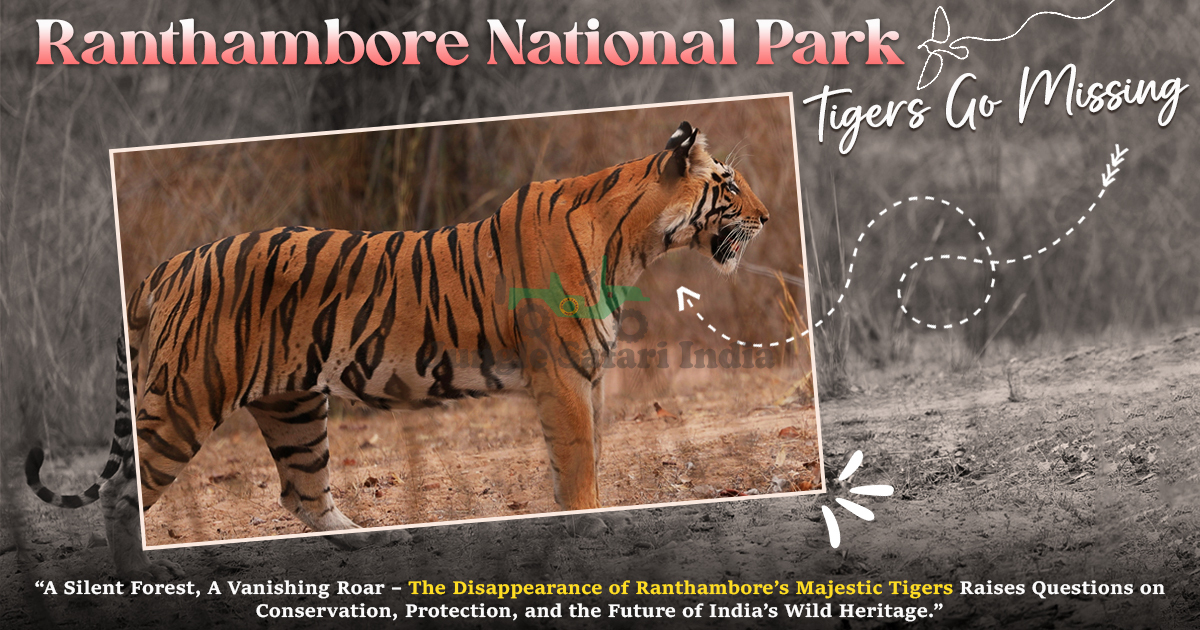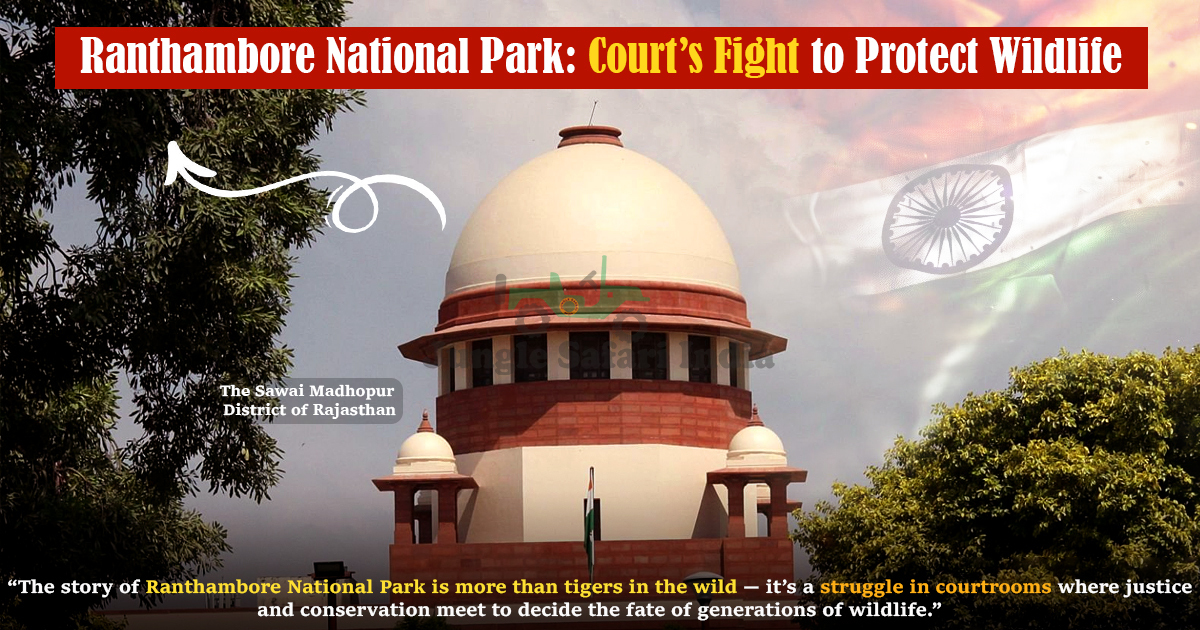Ranthambore National Park is in the Rajasthan state which is famous for its wildlife and history. This national park is most famous for housing a good number of tigers, and most visitors can have a chance to view them, especially near waterholes in the early morning. Beautiful landscapes in this park also feature wide grasslands and ancient ruins. This guide is for photographers, whether they are beginners or experts, showing them the best spots in the park to take pictures. It explains the most photogenic areas in this park, along with very useful tips for you to take better photos. At every location, there’s not only a great view, but you can also learn to improve your photography skills on your Ranthambore safari.
1. The Waterholes Of Ranthambore
The waterholes in Ranthambore National Park are very essential for the wild animals. These spots are not only where animals come to drink water, but many other activities also happen there. When tigers visit these waterholes to drink, deer stay near them, with their senses ready to detect danger. Birds such as storks and herons often gather near the waterhole, making it a more happening area. These photographic waterholes can provide you with good photography opportunities. As the light would be soft both in the morning and late in the afternoon, the best visiting times are the early morning hours or late afternoon hours. That is when most of the animals are active, and the amazing reflections in the water become an excellent sight for photographs. A telephoto lens is helpful for capturing both detailed close-up shots and wide landscape pictures.
2. Ranthambore Fort Viewpoint
Ranthambore Fort is on a tall rocky hill, from where one can easily see the area of the park below. The fort is very old and its walls are breaking into pieces, but it is still surrounded by very beautiful green land. It is very wonderful for people who love clicking pictures. When the sun goes down, the sky transitions into hues of orange and purple, presenting the scene over this beautiful land. I recall standing at a viewpoint and watching a single sambar deer walk towards a waterhole in the distance. A photographer next to me captured the moment, taking a photo of the deer with the fort in the background. This scene shows both the beauty of nature and the history of the fort. Wide-angle lenses are helpful in photography and capture the structural condition of the fort and the environmental surroundings.
3. The Grasslands Of Ranthambore
The large grasslands in Ranthambore Park are great as photographic subjects for those who like capturing photos of animals moving freely in big open spaces. These grasslands are a great place to see animals in the wild. They are also close to many Ranthambore hotels, making it easy for photographers to watch and take pictures of the animals. Photographers can shoot images of running animals, such as a group of chital, or a silent tiger stalking prey. To catch moving animals in a photograph, you should be using a camera with a rapid shutter speed. Another useful photographic technique is known as panning, where the camera itself moves along with the animal so that the audience sees the flow of movement. The best moments for photography are during the early morning safari when the grasslands are softly lit. Also, there is a dew on the grass that brings extra details to the photos, making them interesting.
4. The Ruins Of Jogi Mahal
Jogi Mahal is a former hunting place near the Padam Talao, the lake in this region. This building is made up of red sandstone and has been around for a lot of years and can be seen aging and wearing away. The old ruins of Jogi Mahal look very different from the natural scenery around it, making it an interesting sight to see. Photographers could use the form of Jogi Mahal within their photographs when they are clicking pictures of the wildlife. For instance, a resting tiger by the lake can be photographed with the old walls of the lodge in the background. Adjusting the camera settings makes the tiger stand out clearly while the background becomes soft and less detailed. This method helps capture a photo that combines both the wildlife and the history of this national park.
5. The Early Morning Safari Trails
Ranthambore safaris in the early morning are quite unique. At the start of the day, this national park gradually comes to life. Mist covers the paths, and birds can be heard singing in the air. When the sun rises, it shines softly through the trees, providing a calm and peaceful atmosphere. If you want to enjoy these early moments of wildlife then you can stay at nearby Ranthambore hotels. These hotels are close to the park’s entrance, giving you a comfortable place to rest and easy access for early morning trips. Morning time is perfect for photographers because of the gentle light, which makes beautiful pictures. Using a tripod can help in capturing the soft light and movements of the waking wild animals. Photographers need to be ready at all times, since the best photo opportunities may come at any given time. In most cases, such chances are very brief, therefore, preparedness is vital to take the best photos in Ranthambore National Park.
6. Sundar Mahal
Sundar Mahal is a quiet place and peaceful, located in Ranthambore National Park. This place is full of trees and plants all around, with a soothing atmosphere. Deer and langurs freely roam here and you can explore it without disturbing these animals. It is better to visit this place during the golden hour when the light is soft and perfect for clicking pictures before sunset. The zoom lens helps you capture clear images of the animals without getting too close and disturbing them. You can also experiment with different photo angles, such as photographing the old dome of the monument with a monkey nearby. This location is ideal for wildlife photography due to its quiet environment and the natural beauty all around.

